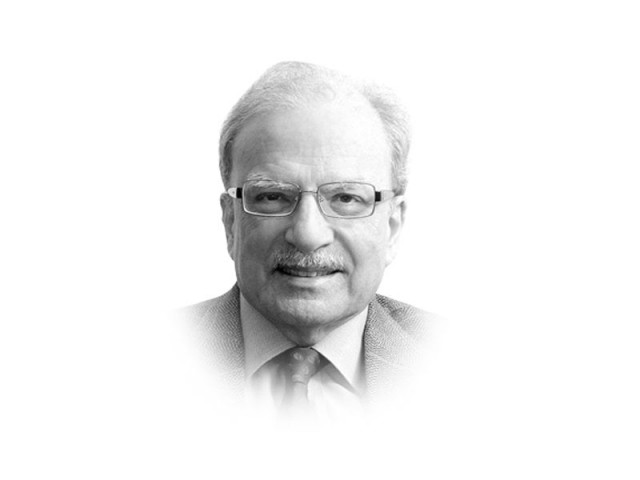Economic theory behind the budget
Implicit in the revealed budget strategy is a two-track approach; save economy first and then work on reviving it.

The writer is a former caretaker finance minister and served as vice-president at the World Bank
The economy will be pulled back from impending disaster by undertaking massive public sector investments. The sector of energy will receive the government’s immediate attention. The first task will be to clear the circular debt that has reduced the generation of power since a number of independent power producers have reduced their output, because they were not appropriately compensated for the electricity they had already fed into the national grid. The only quick way of dealing with this problem is for the government to liquidate this debt and increasing government expenditure over the short term. This would be a one-shot injection of public money. Over the long run, the government indicated that it will put in place a system that would ensure that all consumers pay for the power they use.
Some have been critical of the decision to increase the fiscal deficit in order to tackle the problem created for the economy by serious power shortage. This approach will also make it difficult for Islamabad to sign another programme with the IMF, which does not like large deficits. For Pakistan, it would be irresponsible for the policymakers to opt for austerity at a period of extreme economic stress. By not mentioning the Fund even once in his speech, Minister Dar has indicated that he is prepared to postpone the inevitable approach to the Fund. That is the right approach to adopt.
The implied growth model travels a well-trodden theoretical path. This raises three important questions. Were the theoretical underpinnings of the model deliberately adopted by the new finance minister? Will this path take the new policymakers to the destination they hope to reach? Should they break loose from that path in order to ensure that they get to the goal they have set for themselves and the country? To answer these questions, we should go into the theory that is behind the offered approach.
It started with what came to be called the Harrod-Domar model of economic growth. According to this, the rate of economic growth was constrained by the amount of savings available to the economy. The rate of savings divided by a constant called the incremental capital output ratio (ICOR) yielded the rate of growth in GDP. The ICOR signified the efficiency with which the economy deployed resources that became available for investment. A low ratio signified an efficient economy. A high ratio suggested the opposite.
This was the basic model but with one twist that was behind the thinking that gave Pakistan the highly successful Second Five Year Development Plan (1960-65). The twist was that it added external capital flows to domestic savings to define the total amount of resources available to the economy. Capital from the outside came in the form of official development assistance. According to this, domestic savings constraint could be relaxed by relying on external assistance. Much of official thinking about development was based on this expanded version of the Harrod-Domar model. The Planning Commission in the latter part of the Zardari administration sought to move away from this approach by issuing the Framework for Economic Growth.
To this basic growth model was added another component by the economist Hollis Chenery. According to him, developing economy faced not one but two constraints — or gaps. In addition to the rate of savings, trade deficit also served as an obstacle. Still later, the Brazilian economist Edmar Bacha added a “three gap” model. According to him, fiscal deficits could also constrain growth. Budgetary deficits limit the availability of resources to finance public investments needed to grow an economy. How would the adoption of this approach by Minister Dar affect the Pakistani economy? I will come to this question next week.
Published in The Express Tribune, June 24th, 2013.
Like Opinion & Editorial on Facebook, follow @ETOpEd on Twitter to receive all updates on all our daily pieces.













COMMENTS
Comments are moderated and generally will be posted if they are on-topic and not abusive.
For more information, please see our Comments FAQ